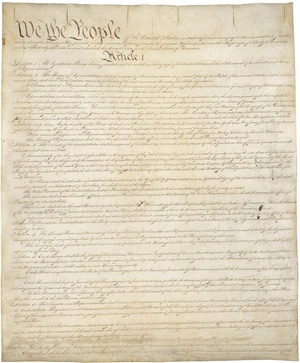The long view: the future of storing and sharing records

Those in government who manage and preserve public records are charged with great responsibility: what they choose to preserve or destroy can dictate how history remembers the promises and actions of a government.
The historical narrative can only be compiled from what is available, after all. Records managers are the ones who create the body of evidence that historians sift through to find the narrative of a time, place, or event. For that reason, what records managers choose to keep and preserve, just as much as what they destroy or allow to deteriorate, has an impact on what the historical narrative can reflect. With that weight on their shoulders, records managers must act with the current and future value of records in mind.
It’s important to consider this as governments work to update their records management practices for the digital era. The transition to a digital era of creating, storing and sharing public records means it is becoming easier to preserve more information and make it more accessible. It is an opportunity for a fuller body of evidence to drive the historical narrative. Digital records will be a key part of this, but history shows that it may make sense to store records in other formats, too.
Why? Preserving records in digital format can present the same kinds of challenges as preserving physical records: records in any one format need the proper care to continue to be accessible. While digital records are not vulnerable to the physical deterioration that paper experiences, there is digital deterioration that needs to be addressed. With physical copies of records, no one needs a certain machine or software to access documents. Digital copies of records, on the other hand, are subject to the rapidly-changing technology landscape.
Think of how many file formats and technologies for storing and accessing those files have come and gone already in the age of the computer. (Used a floppy disk lately?) Digital file formats change quickly and likely will continue to do so. Open formats may be able to help with this to an extent by being accessible through a wide variety of software. The reality for many digital formats, however, is that what is commonly used today could be history tomorrow. For that reason, physical backups of the most important records might continue to be practical. There are already well-established systems in place for ensuring the proper preservation of paper records, even if those systems can be costly or complex. For governments moving to digital records, they’ll need to act now to create strong systems for ensuring the preservation and continued accessibility of records in any format.
Because of the cost associated with paper or physical copies of records, a cost-benefit analysis could help determine when it makes sense to keep such copies. Here’s one thing to consider in that equation: physical copies can prove to be useful in some extreme scenarios. If technology fails, servers are destroyed, or some other catastrophe occurs and wipes out the ability to access digital copies of records, how does a government move on or rebuild? If enough historical information were lost due to a technical failure, the results could be devastating.
Some governments are already working to have a solution in place to such a problem, storing copies of foundational documents in “ideal climate conditions” meant to help ensure the longevity of records. Sometimes, these ideal conditions are purposely located far away from the place where the records were created to ensure that, should disaster strike in one place, there’s a copy of the most crucial information that might be safe somewhere else. It may seem like an extreme scenario to prepare for, but it could prove to be valuable to be prepared rather than caught off guard in a case like this. Preparing for extreme scenarios can help reinforce the value of having digital copies of records, too, as some communities have already experienced when natural disasters strike and damage physical records in one place. It all goes to show that storing the most important records in more than one format may make sense.
There is another, if less practical, value to keeping physical copies of some key records: sentimental value. There’s a power to preserving historical documents that helped shape our government and our communities. Preserving these documents for all to see seems to have a certain allure beyond looking at digital files on a screen. There’s a reason people line up to see the Declaration of Independence and Constitution on display at the National Archive. Sometimes, it seems, people still feel drawn by a sense of “seeing is believing”.
As more governments adopt open data policies, prompting the update of records management practices, they should plan to continually reassess their formulas for determining what records to keep and how. Open data and the promise of proactively sharing more information online where people are looking for it could be the jumpstart governments need to update records management for the 21st Century.

